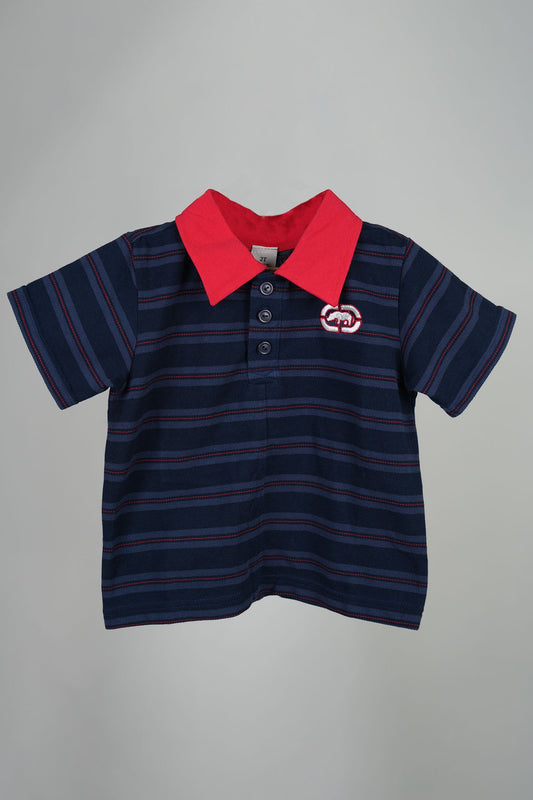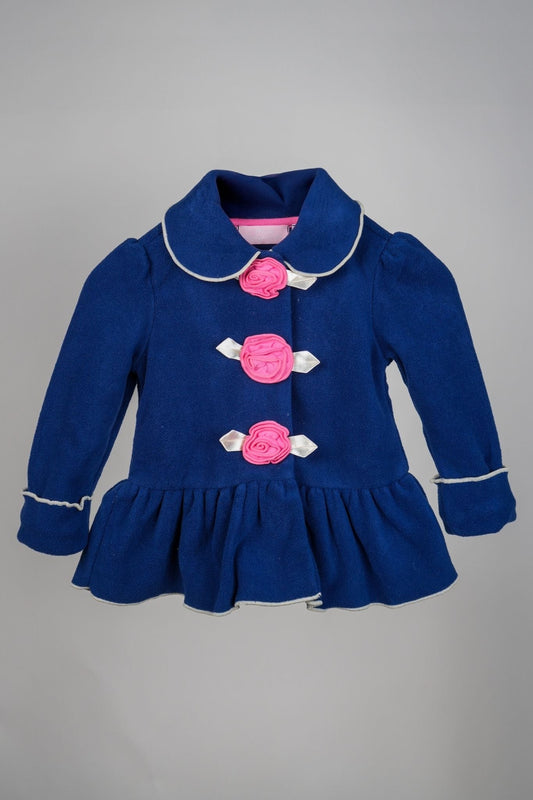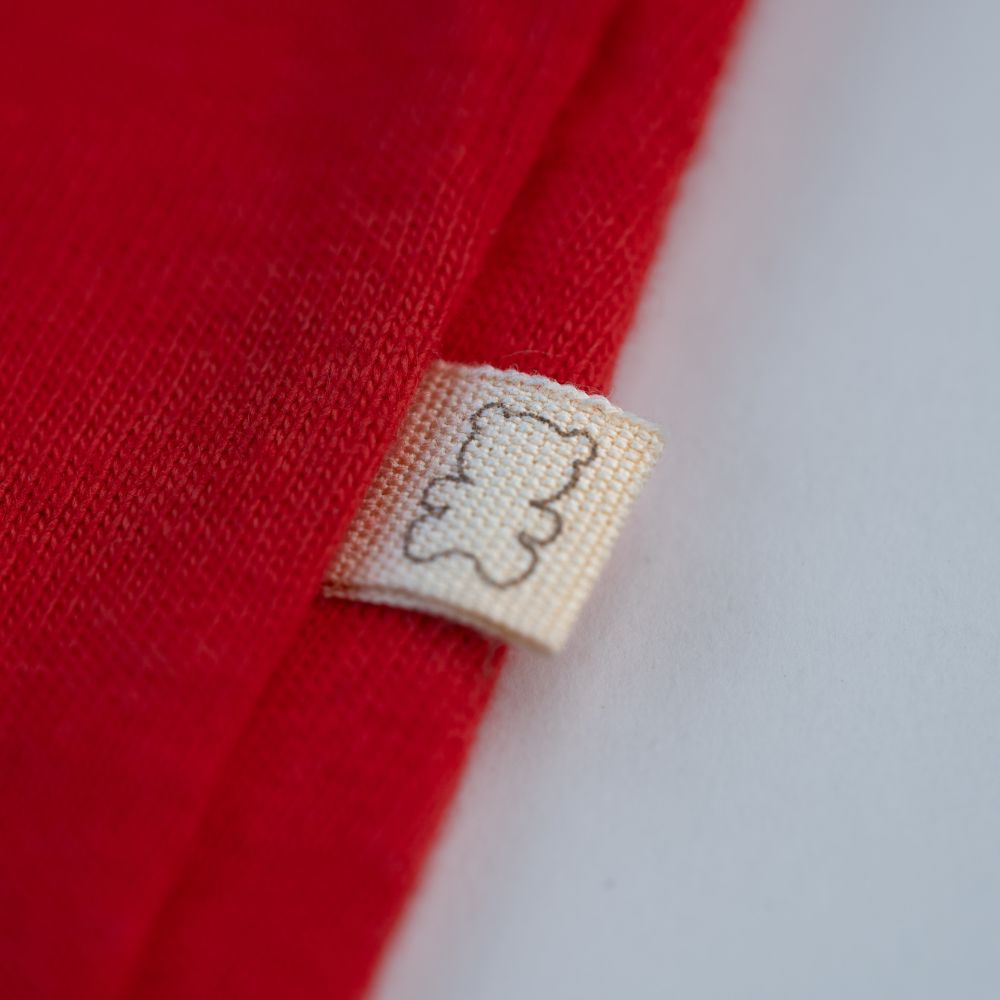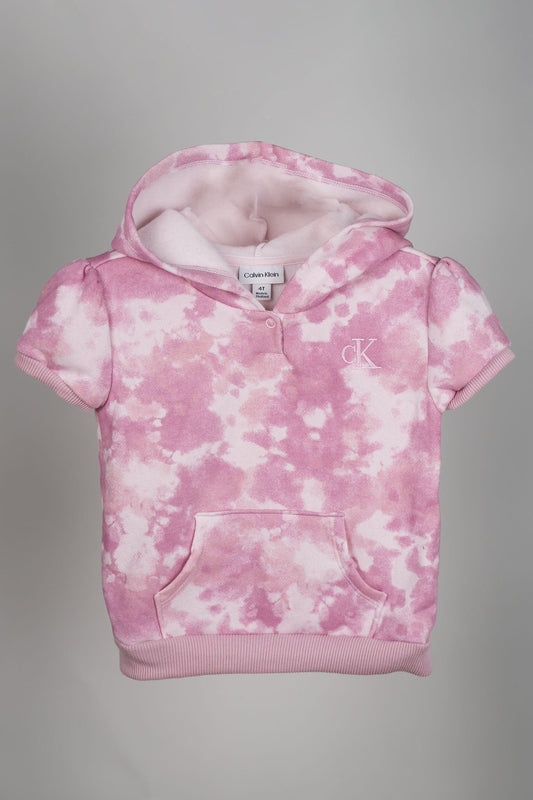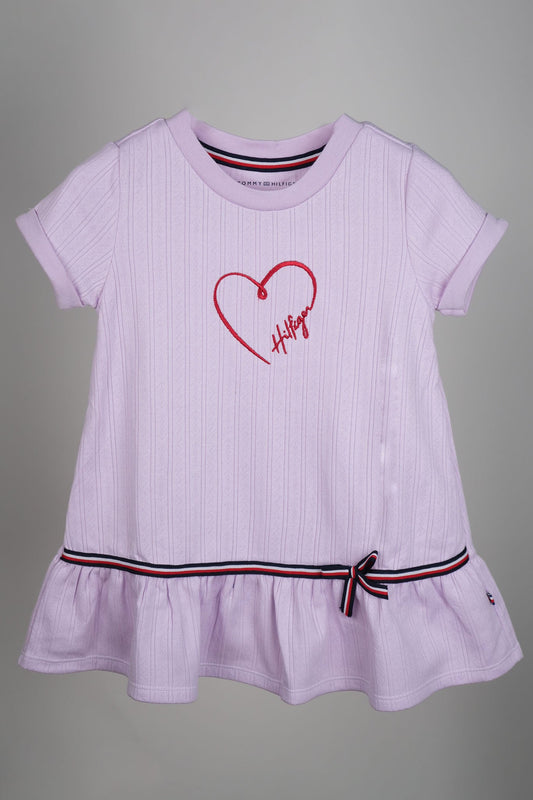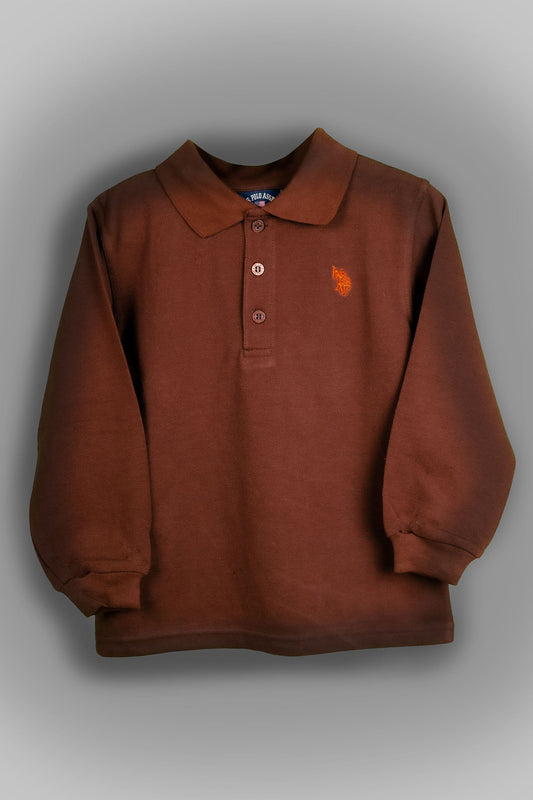Checklist of Essential Baby Clothes for the First Year: What You Really Need
All the important things you need for you New Born's First Year!
Welcoming a new baby into your life is a joyous occasion filled with excitement and anticipation. However, along with the joy comes the overwhelming task of preparing for their arrival, especially when it comes to figuring out what clothes your baby will need. With countless options available in stores and online, from adorable onesies to intricate outfits, it’s easy to get lost in the sea of baby fashion. As a new parent, you might find yourself asking, "What does my baby really need?" This guide aims to simplify your shopping experience by highlighting the essential baby clothes for the first year. Whether you're a first-time parent or looking to update your baby’s wardrobe, understanding the must-haves can help you make practical, cost-effective, and stylish choices for your little one.
Onesies and Bodysuits for Newborns
Why They Are Essential: Onesies and bodysuits are the cornerstone of your baby’s wardrobe, offering unmatched versatility and convenience. These one-piece garments are designed to cover the torso and snap at the crotch, making diaper changes quick and easy. They are suitable for layering, which is crucial for regulating your baby’s body temperature. Whether you’re dressing your baby for a hot summer day or layering up for winter, onesies and bodysuits provide a practical base layer.
Types of Onesies and Bodysuits:
- Short-Sleeved Onesies: Perfect for warmer weather or as a base layer under other clothing. They keep your baby cool while protecting their sensitive skin.
- Long-Sleeved Onesies: Ideal for cooler weather, providing additional warmth. These can be worn alone or layered under sweaters and jackets.
- Sleeveless Bodysuits: Great for very hot climates, allowing maximum breathability and comfort.
- Kimono-Style Bodysuits: These feature side snaps or ties, which are perfect for newborns as they eliminate the need to pull clothing over your baby’s head, making dressing less stressful.
Material Matters: When choosing onesies and bodysuits, opt for soft, breathable fabrics such as organic cotton. Organic cotton is gentle on your baby’s delicate skin and free from harmful chemicals, reducing the risk of skin irritation and allergies. It’s also a more sustainable choice, supporting eco-friendly farming practices.
How Many to Buy: Given how frequently babies need changing due to spills, spit-ups, and diaper accidents, it’s wise to stock up on at least 10-15 onesies or bodysuits. This quantity ensures you always have a clean one ready, even if laundry day gets delayed. Here’s a quick breakdown of how you might allocate these:
- Short-Sleeved Onesies: 5-7
- Long-Sleeved Onesies: 3-5
- Sleeveless Bodysuits: 2-3
- Kimono-Style Bodysuits: 2-3
Choosing the Right Size: Babies grow rapidly, so selecting the right size is crucial. It’s often a good idea to buy onesies and bodysuits in a range of sizes to accommodate your baby’s growth spurts. Look for options with a bit of stretch to them, as they can fit your baby comfortably for longer. Brands typically offer size charts to help you choose the best fit based on your baby’s current weight and length.
Practical Features: Look for practical features in onesies and bodysuits that can make your life easier:
- Envelope Shoulders: These allow the onesie to be easily pulled down over the shoulders and off the body, which is especially useful during a messy diaper change.
- Snap Closures: Snaps at the crotch area make diaper changes faster and simpler. Ensure the snaps are durable and easy to fasten and unfasten.
- Tagless Labels: Tags can irritate a baby’s sensitive skin. Many brands now offer tagless options, where the size and care information are printed directly on the fabric.
Style and Design: While functionality is key, there’s no reason you can’t have fun with the designs. Onesies and bodysuits come in a variety of colors, patterns, and prints. From adorable animal motifs and playful patterns to simple solids and stripes, you can choose styles that reflect your personality or fit a theme.
Layering Tips:
- Warm Weather: Pair a short-sleeved onesie with a lightweight cotton romper or dress.
- Cool Weather: Layer a long-sleeved bodysuit under a cozy sweater and soft pants.
- Sleep Time: A long-sleeved onesie under a sleep sack keeps your baby snug and warm without the need for loose blankets in the crib.
In conclusion, onesies and bodysuits are indispensable for their practicality, comfort, and versatility. By choosing high-quality, comfortable fabrics and stocking up on a good variety, you ensure your baby is well-dressed and ready for any occasion.
Sleepers and Pajamas for Newborns
Why They Are Essential: Sleepers and pajamas are crucial for ensuring your baby has a good night's sleep. These all-in-one outfits keep your baby warm and comfortable throughout the night, reducing the chances of waking up due to discomfort. They often come with built-in feet, eliminating the need for separate socks and ensuring your baby stays cozy from head to toe.
Types of Sleepers and Pajamas:
- Zippered Sleepers: These make middle-of-the-night diaper changes quick and easy. Look for sleepers with zippers that open from the bottom to avoid exposing your baby’s chest to the cold.
- Snap-Button Pajamas: Though slightly more time-consuming, snap-button pajamas offer a secure fit and can be adjusted for a snugger fit around the legs and arms.
- Footed Pajamas: Perfect for colder nights, these pajamas ensure your baby’s feet stay warm without the need for additional socks.
Material Matters: Choose sleepers and pajamas made from soft, breathable fabrics like cotton or bamboo. For colder months, fleece sleepers can provide extra warmth. Ensure the materials are hypoallergenic to avoid any skin irritation.
How Many to Buy: It’s a good idea to have at least 7-10 sleepers or pajamas on hand. Babies can go through multiple outfits in a night due to spit-ups or diaper leaks, so having an ample supply ensures you’re always prepared.
Choosing the Right Size: Just like onesies, sleepers should be purchased in a range of sizes to accommodate your baby’s rapid growth. Look for stretchy materials and roomy designs that allow for some growing room.
Practical Features: When selecting sleepers and pajamas, consider features that will make nighttime changes and dressing easier:
- Two-Way Zippers: These allow you to unzip from the top or bottom, making diaper changes quicker and less disruptive.
- Fold-Over Mittens: Integrated mittens can prevent your baby from scratching themselves and keep their hands warm.
- Non-Slip Feet: For older babies who are starting to stand or walk, non-slip grips on the feet of sleepers can prevent falls.
Style and Design: While comfort and practicality are paramount, you can still choose fun designs and patterns. From whimsical animal prints to soothing pastel colors, there are plenty of options to suit your taste.
Layering Tips:
- Warm Weather: In warmer months, a light cotton sleeper can be paired with a muslin swaddle.
- Cool Weather: During colder months, a fleece sleeper under a wearable blanket ensures your baby stays warm.
Sleepers and pajamas are essential for keeping your baby comfortable and secure throughout the night. By selecting the right materials and practical features, you can ensure your little one gets the restful sleep they need.
Shirts and Tops for Newborns
Why They Are Essential: Simple t-shirts and long-sleeve tops are great for layering and can add a pop of color or pattern to your baby’s outfit. They are easy to put on and take off, making them a practical choice for everyday wear.
Types of Shirts and Tops:
- Short-Sleeved T-Shirts: Perfect for warm weather, these shirts keep your baby cool and comfortable.
- Long-Sleeved Tops: Ideal for cooler weather, providing additional warmth while allowing freedom of movement.
- Button-Up Shirts: Great for special occasions or a more dressed-up look.
Material Matters: Choose shirts and tops made from soft, breathable fabrics like cotton or bamboo. These materials are gentle on your baby’s skin and help regulate their body temperature.
How Many to Buy: It’s a good idea to have 7-10 shirts and tops on hand. This ensures you have enough clean options for daily wear and any unexpected changes.
Choosing the Right Size: Just like other clothing items, shirts and tops should be purchased in a range of sizes to accommodate your baby’s growth. Look for options with a bit of stretch and roomy designs that allow for movement.
Practical Features: When selecting shirts and tops, consider features that enhance comfort and convenience:
- Envelope Shoulders: These allow the shirt to be easily pulled down over the shoulders and off the body, which is especially useful during a messy diaper change.
- Snap Closures: Snaps at the back or shoulder area make dressing and undressing easier.
- Tagless Labels: Tags can irritate a baby’s sensitive skin. Many brands now offer tagless options, where the size and care information are printed directly on the fabric.
Style and Design: Shirts and tops come in a variety of colors, patterns, and styles. From playful prints and whimsical designs to simple solids and stripes, you can choose styles that reflect your baby’s personality or fit a theme.
Layering Tips:
- Warm Weather: Pair a short-sleeved t-shirt with shorts or a skirt for a comfortable and breathable outfit.
- Cool Weather: Layer a long-sleeved top under a sweater or jacket for added warmth.
Shirts and tops are essential for keeping your baby stylish and comfortable. By choosing the right materials and practical features, you can ensure your baby is ready for any occasion.
Swaddles and Sleep Sacks for Newborns
Why They Are Essential: Swaddles and sleep sacks help babies feel secure and can improve their sleep quality by preventing the startle reflex. Swaddling mimics the snug environment of the womb, providing comfort and reducing fussiness.
Types of Swaddles and Sleep Sacks:
- Traditional Swaddles: Simple blankets that can be wrapped around your baby to provide a snug fit.
- Velcro Swaddles: These come with Velcro straps to ensure a secure and adjustable fit.
- Sleep Sacks: Wearable blankets that keep your baby warm without the need for loose blankets in the crib.
Material Matters: Choose swaddles and sleep sacks made from soft, breathable fabrics like cotton or muslin. These materials help regulate your baby’s body temperature and reduce the risk of overheating.
How Many to Buy: It’s a good idea to have 3-5 swaddles or sleep sacks on hand. This quantity ensures you always have a clean one ready, even if laundry day gets delayed.
Choosing the Right Size: Swaddles and sleep sacks come in various sizes to accommodate your baby’s growth. Look for options that offer a snug but comfortable fit, allowing your baby to move their legs freely.
Practical Features: When selecting swaddles and sleep sacks, consider features that enhance comfort and convenience:
- Adjustable Fit: Velcro or snap closures allow for a custom fit as your baby grows.
- Two-Way Zippers: These make diaper changes quick and easy without disturbing your baby’s sleep.
- Breathable Materials: Choose materials that allow for good air circulation to prevent overheating.
Style and Design: Swaddles and sleep sacks come in a variety of colors, patterns, and styles. From soft pastels and neutral tones to playful prints and whimsical designs, you can choose styles that match your baby’s nursery or your personal taste.
Layering Tips:
- Warm Weather: Use a lightweight muslin swaddle to keep your baby cool and comfortable.
- Cool Weather: Layer a sleep sack over a long-sleeved onesie for added warmth without the need for loose blankets.
Swaddles and sleep sacks are essential for providing comfort and security to your baby during sleep. By choosing the right materials and practical features, you can ensure your baby has a safe and restful sleep environment.
Socks and Booties for Newborns
Why They Are Essential: Socks and booties are crucial for keeping your baby’s feet warm. Opt for ones that stay on well and are made from soft materials. They not only provide warmth but also protect your baby’s feet from cold surfaces and minor injuries.
Types of Socks and Booties:
- Cotton Socks: Soft and breathable, perfect for everyday wear.
- Fleece Booties: Thicker booties for colder weather, providing extra warmth and insulation.
- Non-Slip Socks: Ideal for older babies who are starting to stand or walk, offering extra grip to prevent falls.
Material Matters: Choose socks and booties made from soft, breathable fabrics like cotton or fleece. These materials help regulate your baby’s body temperature and reduce the risk of overheating.
How Many to Buy: It’s a good idea to have 7-10 pairs of socks and 3-5 pairs of booties on hand. This quantity ensures you always have a clean pair ready, even if laundry day gets delayed.
Choosing the Right Size: Socks and booties should fit snugly but comfortably. Look for options with a bit of stretch to accommodate your baby’s growing feet. Many brands offer size charts to help you choose the best fit based on your baby’s age and foot length.
Practical Features: When selecting socks and booties, consider features that enhance comfort and convenience:
- Elastic Cuffs: Ensure the socks stay on your baby’s feet without being too tight.
- Non-Slip Soles: For older babies who are starting to stand or walk, non-slip grips on the soles can prevent falls.
- Seamless Design: Choose socks with a seamless design to avoid irritating your baby’s sensitive skin.
Style and Design: Socks and booties come in a variety of colors, patterns, and styles. From playful prints and whimsical designs to simple solids and stripes, you can choose styles that reflect your baby’s personality or match their other clothing items.
Layering Tips:
- Warm Weather: Pair cotton socks with lightweight shoes or sandals for added comfort.
- Cool Weather: Layer fleece booties over socks for extra warmth and insulation during colder months.
Socks and booties are essential for keeping your baby’s feet warm and protected. By choosing the right materials and practical features, you can ensure your baby stays comfortable and safe.
Bibs and Burp Cloths for Newborns
Why They Are Essential: Bibs and burp cloths are lifesavers for feeding times and spit-up incidents. They protect your baby’s clothes and make cleanup easier, saving you time and effort. These items are particularly useful during the teething phase when drooling is common.
Types of Bibs and Burp Cloths:
- Feeding Bibs: Larger bibs that cover more of your baby’s chest, perfect for messy feedings.
- Drool Bibs: Smaller, bandana-style bibs that catch drool and keep your baby’s clothes dry.
- Burp Cloths: Soft, absorbent cloths that can be draped over your shoulder or lap to catch spit-up during burping.
Material Matters: Choose bibs and burp cloths made from soft, absorbent fabrics like cotton or muslin. These materials are gentle on your baby’s skin and help absorb moisture quickly.
How Many to Buy: It’s a good idea to have 7-10 bibs and 5-7 burp cloths on hand. This quantity ensures you always have a clean one ready, even if laundry day gets delayed.
Choosing the Right Size: Bibs should fit snugly but comfortably around your baby’s neck. Look for adjustable options that can grow with your baby. Burp cloths should be large enough to cover your shoulder and catch any spit-up.
Practical Features: When selecting bibs and burp cloths, consider features that enhance comfort and convenience:
- Adjustable Closures: Look for bibs with adjustable snaps or Velcro closures to ensure a secure fit.
- Waterproof Layers: Some bibs come with waterproof layers to prevent moisture from soaking through to your baby’s clothes.
- Easy-Care Fabrics: Choose materials that are machine washable and quick-drying for easy care.
Style and Design: Bibs and burp cloths come in a variety of colors, patterns, and styles. From playful prints and whimsical designs to simple solids and stripes, you can choose styles that reflect your baby’s personality or match their other clothing items.
Layering Tips:
- Warm Weather: Pair a lightweight bib with a short-sleeved bodysuit to keep your baby cool and comfortable during feedings.
- Cool Weather: Layer a burp cloth over a long-sleeved onesie and pants to catch spit-up during burping sessions.
Bibs and burp cloths are essential for managing messes and keeping your baby’s clothes clean. By choosing the right materials and practical features, you can ensure feeding times are less stressful and more enjoyable.
Rompers and Jumpsuits for Newborns
Why They Are Essential: Rompers and jumpsuits are great for a quick, stylish outfit. These one-piece wonders are easy to put on and take off, making them perfect for busy parents. They come in various styles and are suitable for both playtime and outings.
Types of Rompers and Jumpsuits:
- Short-Sleeved Rompers: Perfect for warm weather, these rompers keep your baby cool and comfortable.
- Long-Sleeved Jumpsuits: Ideal for cooler weather, providing additional warmth while allowing freedom of movement.
- Dressy Jumpsuits: Stylish options for special occasions or family gatherings.
Material Matters: Choose rompers and jumpsuits made from soft, breathable fabrics like cotton or linen. These materials are gentle on your baby’s skin and help regulate their body temperature.
How Many to Buy: It’s a good idea to have 5-7 rompers or jumpsuits on hand. This quantity ensures you always have a clean one ready for daily wear or any unexpected changes.
Choosing the Right Size: Rompers and jumpsuits should fit snugly but comfortably. Look for options with a bit of stretch to accommodate your baby’s growth. Many brands offer size charts to help you choose the best fit based on your baby’s current weight and length.
Practical Features: When selecting rompers and jumpsuits, consider features that enhance comfort and convenience:
- Snap Closures: Snaps at the crotch area make diaper changes faster and simpler.
- Elastic Waistbands: Elastic waistbands provide a snug but comfortable fit, making it easy to dress and undress your baby.
- Tagless Labels: Tags can irritate a baby’s sensitive skin. Many brands now offer tagless options, where the size and care information are printed directly on the fabric.
Style and Design: Rompers and jumpsuits come in a variety of colors, patterns, and styles. From playful prints and whimsical designs to simple solids and stripes, you can choose styles that reflect your baby’s personality or fit a theme.
Layering Tips:
- Warm Weather: Pair a short-sleeved romper with a lightweight hat to keep your baby cool and protected from the sun.
- Cool Weather: Layer a long-sleeved jumpsuit under a cozy sweater and soft pants for added warmth.
Rompers and jumpsuits are essential for providing quick and stylish outfit solutions. By choosing the right materials and practical features, you can ensure your baby is well-dressed and ready for any occasion.
Conclusion
Navigating the world of baby clothes can be overwhelming, but knowing what essentials you need for your newborn's first year can make the process easier. From onesies and bodysuits to sleepers and pajamas, ensuring your baby is comfortable, safe, and stylish is key. By focusing on high-quality, practical, and versatile items, you can create a functional and adorable wardrobe for your little one.
Check out the complete collection of Mixmax baby clothes for your newborn and get quick delivery.
FAQ's
What are the must-have newborn baby clothes?
When preparing for a newborn, essential baby clothes include onesies, sleepers, bodysuits, socks, hats, and mittens. These items are crucial for keeping your baby comfortable and safe. Onesies and bodysuits are perfect for layering, sleepers ensure a good night's sleep, and socks and hats help regulate your baby's body temperature.
How many outfits should I buy for my newborn?
It's recommended to have at least 10-15 onesies or bodysuits, 7-10 sleepers or pajamas, 7-10 pairs of socks, and 3-5 hats and mittens. This ensures you have enough clothes to keep your newborn clean and comfortable, even with frequent changes due to spills and diaper accidents.
What materials are best for newborn baby clothes?
For newborn baby clothes, soft, breathable fabrics such as organic cotton or bamboo are ideal. These materials are gentle on your baby’s sensitive skin and help regulate body temperature, reducing the risk of skin irritation and allergies.
Can I buy newborn baby clothes online?
Yes, buying newborn baby clothes online is convenient and offers a wide variety of options. Ensure you check the size charts and read reviews to choose the best fit and quality. Many online stores like Mixmax provide detailed descriptions and size guides to help you make informed decisions.
How do I choose the right size for my baby?
Babies grow rapidly, so it's essential to buy clothes in a range of sizes to accommodate growth spurts. Check the brand’s size chart and consider the baby’s weight and length when selecting sizes. Opt for clothes with a bit of stretch to ensure a comfortable fit for longer.
What practical features should I look for in newborn baby clothes?
Look for practical features like snap closures for easy diaper changes, envelope shoulders for quick dressing, and tagless labels to avoid skin irritation. Additional features like fold-over mittens, two-way zippers, and adjustable straps can also enhance convenience and comfort for both you and your baby.
Are there specific types of clothing for different seasons?
Yes, it's important to dress your baby appropriately for different seasons. Short-sleeved onesies and lightweight rompers are ideal for warm weather, while long-sleeved bodysuits, fleece sleepers, and knit hats are perfect for cooler months. Layering is key to keeping your baby comfortable year-round.
What are some tips for layering baby clothes?
For warm weather, layer a short-sleeved onesie with a lightweight cotton romper or dress. In cooler weather, use long-sleeved bodysuits under sweaters and pants, and add a sleep sack for bedtime. Ensure layers are breathable and easy to add or remove as needed.
Can I find eco-friendly and organic newborn baby clothes online?
Yes, many online retailers offer eco-friendly and organic baby clothes made from sustainable materials like organic cotton. These options are gentle on your baby’s skin and better for the environment. Look for certifications and labels that indicate organic and eco-friendly practices.
What are the benefits of buying toddler clothing as well?
Buying toddler clothing in advance can be a cost-effective way to prepare for your baby’s growth. Toddlers need comfortable, durable clothes that can withstand active play. Look for versatile pieces that can mix and match, ensuring a practical and stylish wardrobe as your baby grows.
